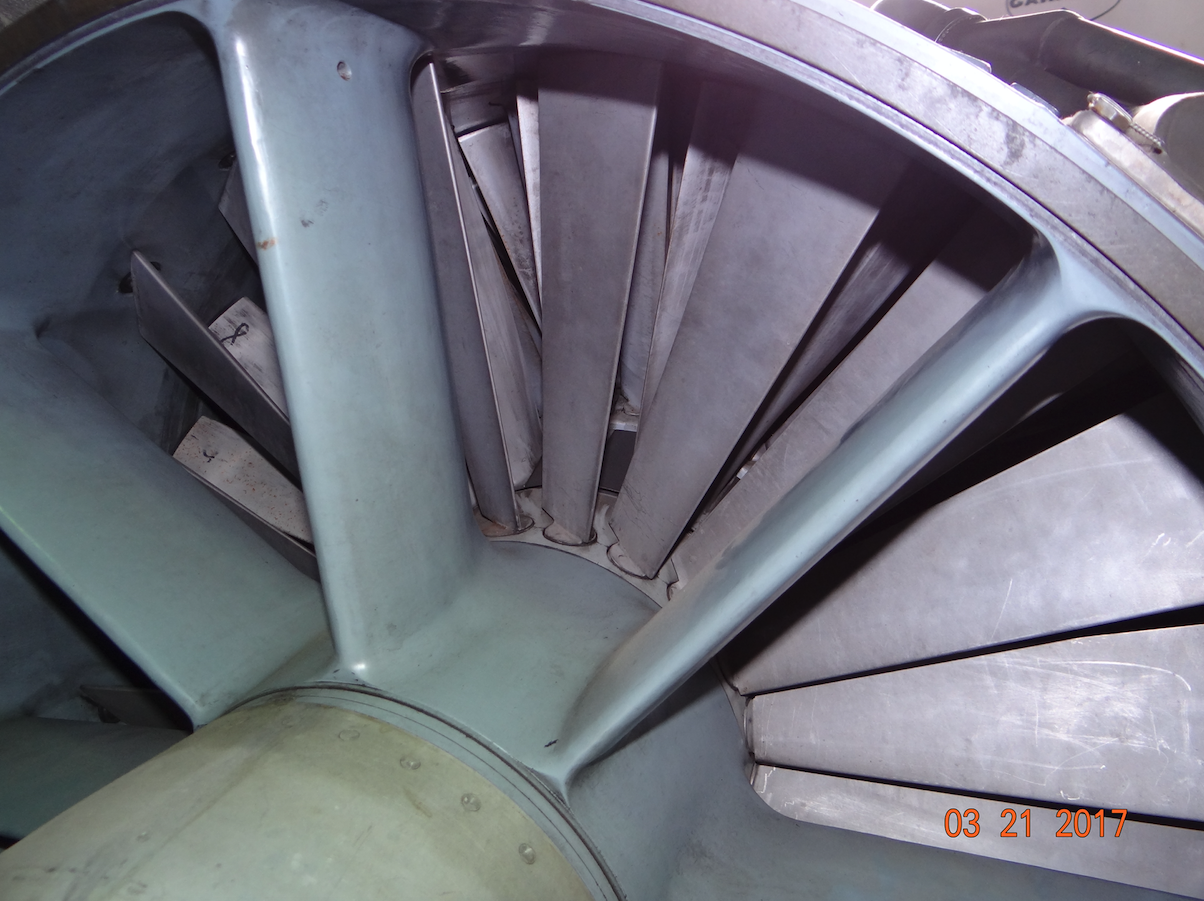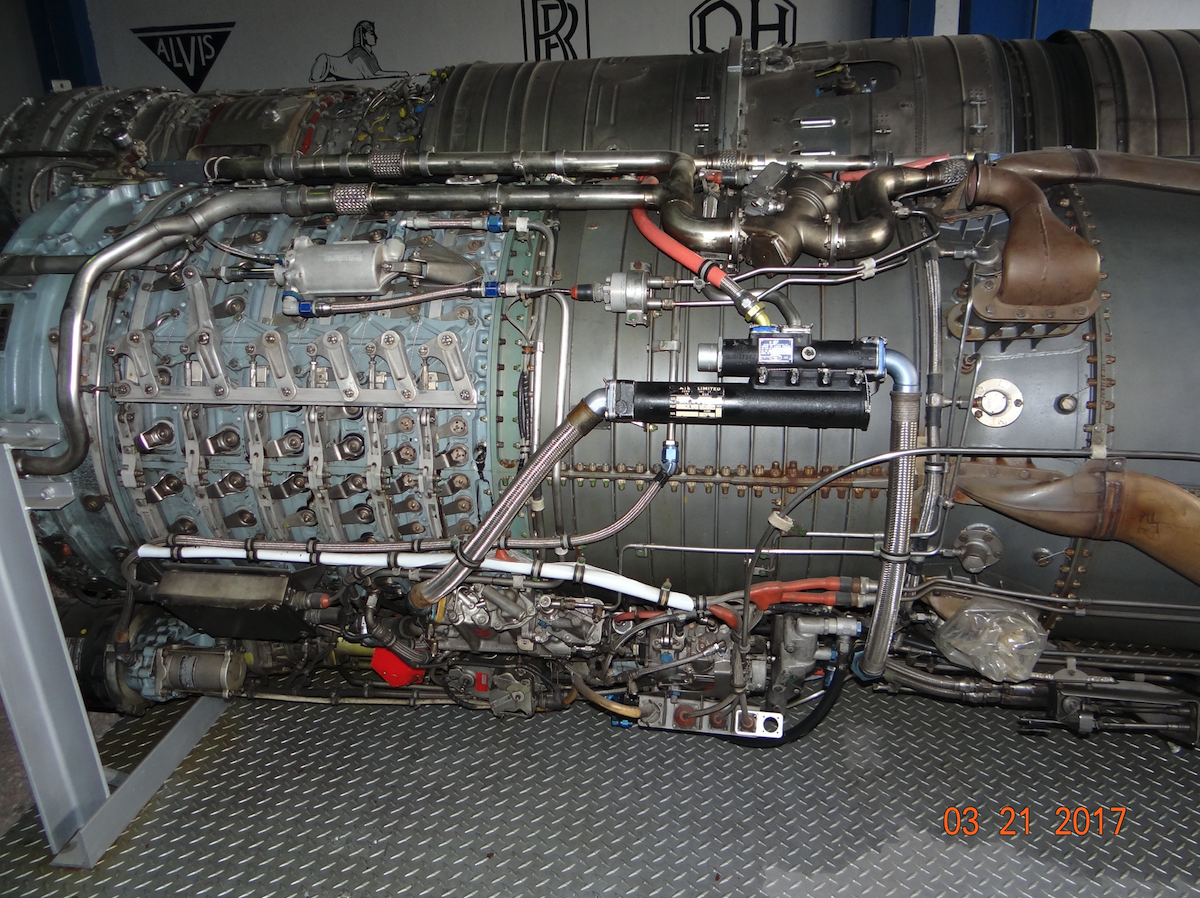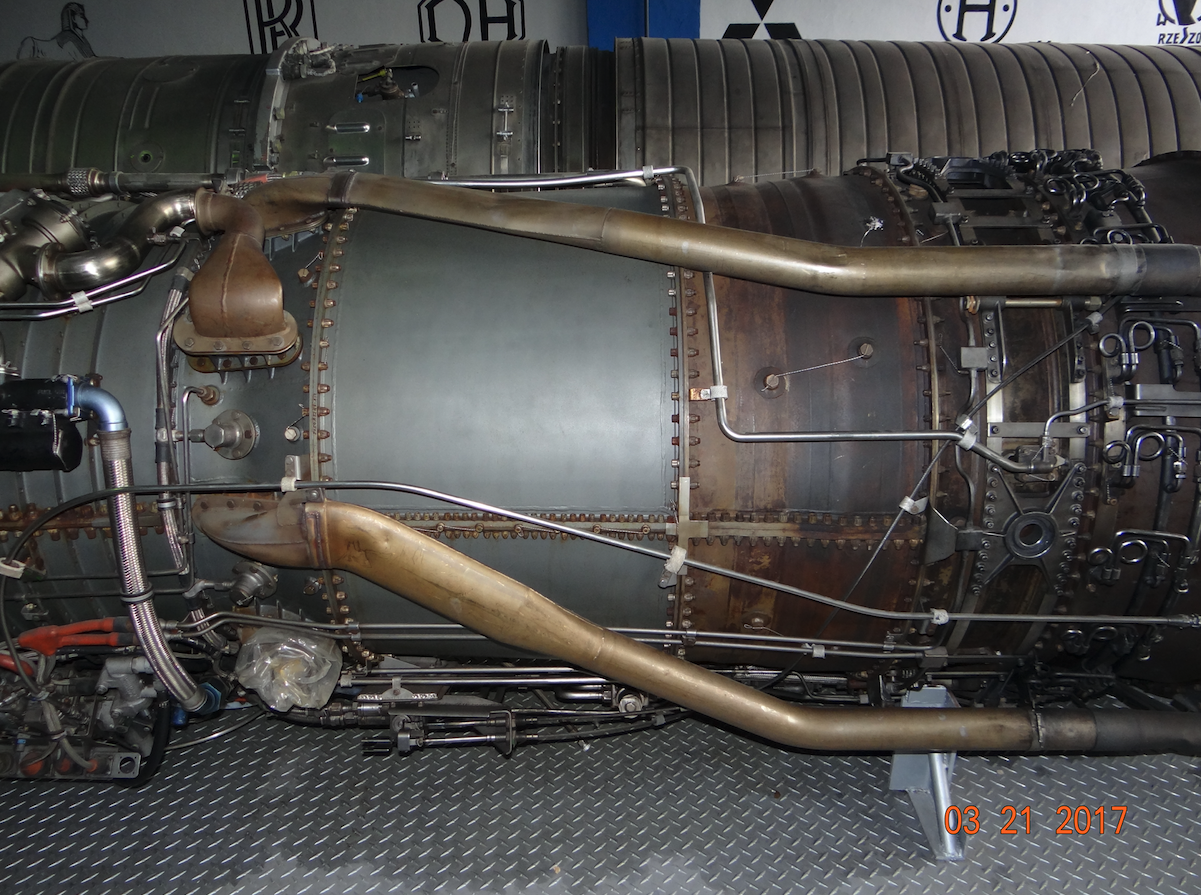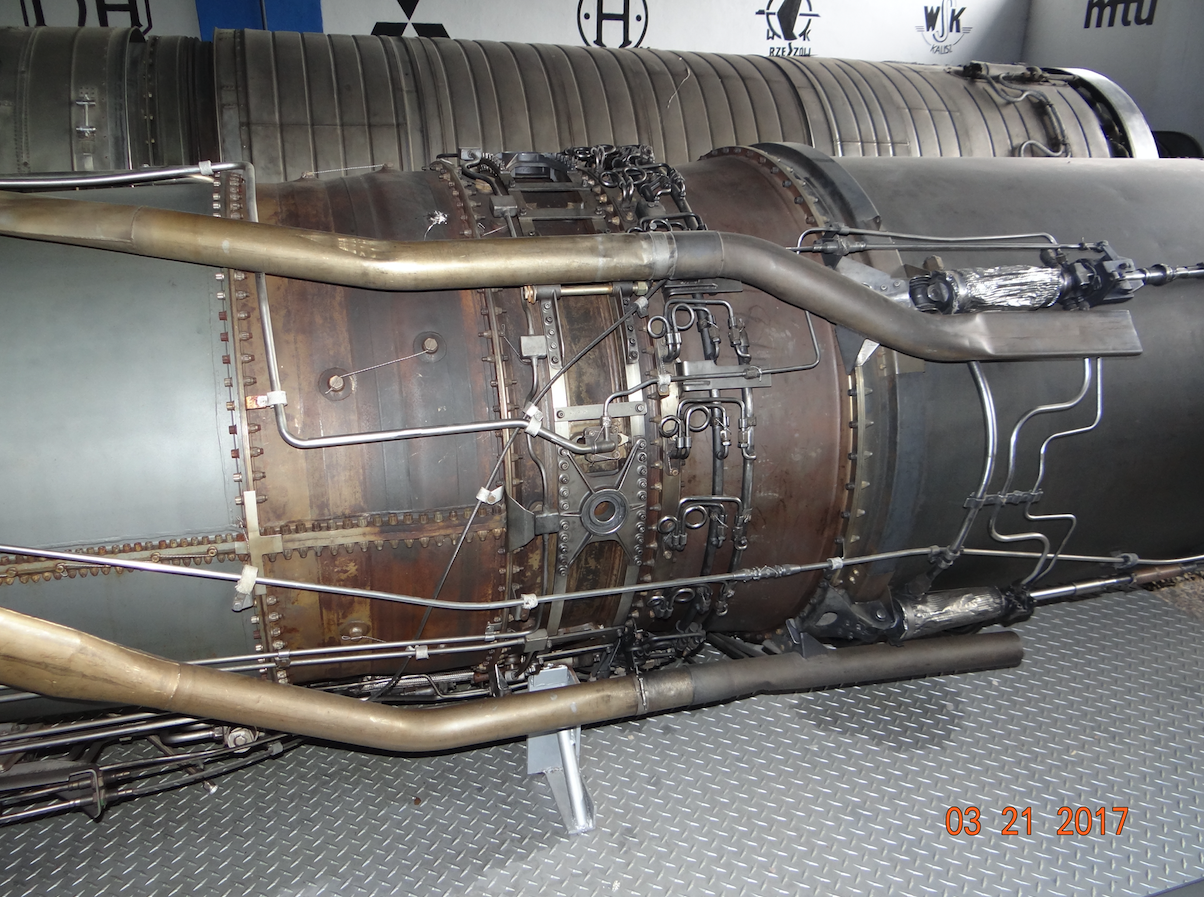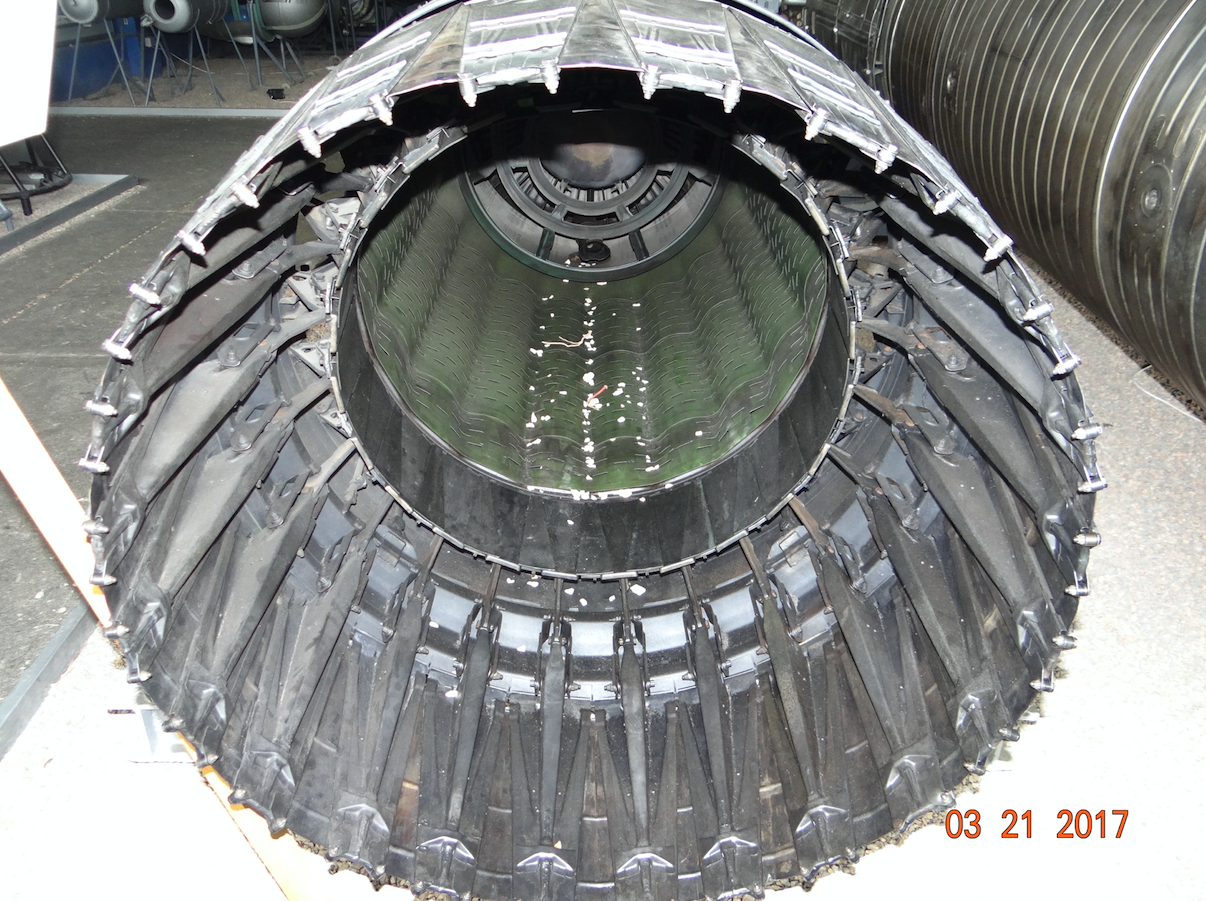Kraków 2020-10-31
Historia silnika General Electric J79.
Ruchome kierownice aerodynamiczne stojanu sprężarki było jedną z dróg dla poprawy pracy silnika turboodrzutowego. Firma General Electric prawie przez rok rozważała – Jaką koncepcję wybrać? W 1952 roku, zdecydowano się na układ ruchomych kierownic. W tym układzie łatwiej było opracować układy olejenia i systemy uszczelnień, co nie było proste w układzie dwu-wałowym. Konkurent, firma Pratt and Whitney wybrała układ dwu-wałowy dla silnika J57. Układ z ruchomymi kierownicami zastosowano w silniku firmy General Electric J79. Fabryczne oznaczenie silnika X-24A. Sprężarka tego silnika ma aż 17-stopni. Pierwsze kilka stopni kierownic w sprężarce są regulowane. Ich zmienne położenie reguluje prędkość przepływu powietrza i kierunek jego zawirowań, poprawiając rozkład ciśnienia i uniemożliwiając dostarczenie zbyt dużej ilości powietrza na kolejne stopnie. Silnik jest jedno-wałowy, a mimo to ma podobne parametry sprężania jak współczesne mu pierwsze silniki dwu-wałowe i to przy wyraźnie mniejszej masie konstrukcji. Pierwsze testy były tak dobre, że inżynierowie podejrzewali błędy w pracy aparatury pomiarowej. Pierwsze testy w powietrzu przeprowadzono w dniu 20 maja 1955 roku, na samolocie B-45 C. Silnik był wysuwany z komory bombowej. Po jego uruchomieniu standardowe silniki wyłączono i samolot leciał tylko na jednym silniku.
Silnik doskonale nadał się do samolotów o dużych prędkościach lotu: F-104, B-58, F11F, F-4, A-5 i inne. Wersja komercyjna oznaczona CJ805 napędzała samolot pasażerski Convair CV-880 oraz Convair CV-990. Silnik CJ805 nie ma dopalacza, za to został wyposażony w odwracacz ciągu i tłumik hałasu. Licencje na silnik J79 sprzedano kilku firmom na świecie (Belgia, Kanada, Izrael, Włochy, Japonia). W 1959 roku, silnik J79 jako General Electric LM 1500 stał się bazą do napędu okrętów i jako stacjonarny do zastosowań przemysłowych. Przez ponad 30 lat zbudowano ponad 17 000 silników J79.
Ogólna budowa silnika J79: 17-stopni sprężarki, pierścieniowa komora spalania, 3-stopniowa turbina. Długość 5,30 m (17,4 ft), średnica 0,98 m (3,2 ft), masa 1 750 kg. Łopatki sprężarki wykonano ze stali nierdzewnej. Osadzono je w dyskach. Pierwsze siedem dysków wykonano z tytanu. Przekładane są dyskami stalowymi wykonanymi ze stali nierdzewnej. Kompresja sprężarki wynosi 13,5:1. Przez silnik przepływa powietrze w ilości 77 kg/s. Temperatura przed turbiną wynosi 930 stopni C. Zużycie paliwa 87 kg/kNxh bez dopalania i 200 kg/kNh z dopalaniem. Współczynnik ciągu do ciężaru wynosi 45,4 N/kg. Ciąg 52,96 kN bez dopalania, ciąg 79,33 kN z dopalaniem. Początkowo silniki J79 bardzo dymiły, zwłaszcza na średnich obrotach. Później dymienie to udało się ograniczyć.
W UK firma Rolls-Royce początkowo wybrała rozwiązanie z ruchomymi kierownicami między stopniami sprężarki. Nie udało się jednak w silniku Rolls Royce Avon osiągnąć takich wyników jakie osiągnęła firma General Electric z silnikiem J79. Podjęto więc decyzję o zastosowaniu tylko ruchomych kierownic przed pierwszym stopniem sprężarki. Pozostałe kierownice zastąpiono upustem powietrza w połowie długości sprężarki. Silnik Rolls-Royce Avon użyto w nowszych modelach samolotów komercyjnych Comet oraz we francuskim Caravell.
Silnik J79 był pierwotnie znany jako X-24A. Pierwsze uruchomienie silnika General Electric J79 na hamowni nastąpiło w 1952 roku. Prototyp XJ79-GE-1 pierwszy raz był uruchomiony w dniu 8 czerwca 1954 roku, a na samolocie w dniu 20 maja 1955 roku. Silnik z dopalaniem miał ciąg 63,83 kN. W dniu 8 grudnia 1955 roku, przeprowadzono 50-godzinny test. Pierwszym samolotem, który był napędzany silnikiem J79 był pokładowy myśliwiec Douglas F4D Skyray. Następnymi samolotami były Lockheed F-104 Starfighter, Grumman F11F Tiger i McDonnell Douglas F-4 Phantom II. Silnik J79-GE-11A, używany w samolotach F-104G i TF-104G ma ciąg 69 kN z dopalaniem.
W 1960 roku, cena silnika wynosiła 624 727 US$. General Electric J79 to silnik turboodrzutowy, który może być używany w samolotach o prędkości naddźwiękowej, do prędkości Ma-2. Był produkowany w USA i na podstawie licencji w kilku innych krajach: RFN, Włoszech, Belgii, Kanadzie i Japonii.
Budowa silnika General Electric J79.
Silnik J79 jest jedno-przepływowy, jedno-wałowy, wyposażony w dopalacz. Silnik rozpoczyna się stożkiem z turbostarterem. W wlocie umieszczono osiem stałych kierownic, które porządkują przepływ powietrza.
Sprężarka jest osiowa, 17-stopniowa. Kierownice aerodynamiczne (stojan) są umieszczone między stopniami sprężarki. Pierwsze siedem stopni kierownic (stojan) są ruchome. Było to nowatorskie rozwiązanie, które umożliwiają silnikowi uzyskanie ogólnego stosunku ciśnień podobnego do silnika dwu-wałowego przy niższej masie. Kompresja sprężarki wynosi 13,5:1. Łopatki sprężarki są wykonane ze stali nierdzewnej i są zamontowane na tarczach. Tarcze pierwszych siedmiu stopni są wykonane z tytanu i rozmieszczone są dystansami ze stali odpornej na korozję. Pozostałe tarcze są wykonane ze stali. Przed komorą spalania silnik ma upusty. Cztery z nich służą do chłodzenia rury dopalacza. Trzy upusty wykorzystywane są do wyrównywanie za wysokiego ciśnienia powietrza w układzie. Komora spalania jest rurowa z układem chłodzenia. Turbina jest trzy-stopniowa. Dopalacz zwiększa ciąg silnika o 49,8 %. Dysza wylotowa silnika jest regulowana.
Podstawowe dane silnika J79-GE-11A:
Długość 5,30 m. Średnica 0,98 m. Masa silnika 1 750 kg. Ciąg maksymalny bez dopalania wynosi 52,96 kN. Ciąg maksymalny z dopalaniem wynosi 79,33 kN. Kompresja sprężarki wynosi 13,5:1. Przepływ powietrza wynosi 77 kg/s. Maksymalna temperatura spalin przed turbiną wynosi 930 stopni Celsjusza. Zużycie paliwa bez dopalania wynosi 24,0 g/kNxs, a z dopalaniem 55,7 g/kNxs. Stosunek ciągu do masy wynosi 4,6:1.
Opracował Karol Placha Hetman


